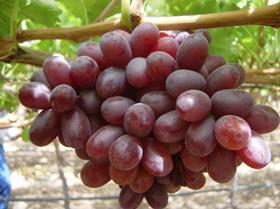
Some of South Africa’s table grape regions have exceeded expectations, allowing industry organisation SATI to lift its forecast to pre-season levels.
The country is now expected to ship between 65.5m and 69.8m cartons. If the upper level of the new forecast is achieved, it will be – in volume terms – a record export season for the country’s growers.
SATI said the decision to lift the forecast was taken due to very good quality and harvest conditions in the Northern Provinces and the three Western Cape based production regions. “This brings the estimate in line again with the first estimate released on 27 October 2020.”
This comes despite the fact that growers in the Orange River region suffered losses due to unseasonal rain in January. The latest information indicates that growers in this region could deliver between 18m and 18.3m cartons, which is considerably higher than the mid-January estimate.
SATI previously stated that, due to the diversity of South Africa’s table grape growing regions, and despite the rain, the country will be able to meet all customer expectations. The latest estimate shows that this is indeed the case.
On track
The Northern Provinces are on track for higher volumes due to favourable summer weather towards the end of the season. This could be higher than the record 2018/19 season.
“The three Western Cape-based regions, namely the Olifants, Hex and Berg river regions, continue to expect healthy volumes as grapes are ripening well and packing picks up pace. This positive outlook is due to very good weather, enough water availability after last winter’s rainfall, large berry sizes and the overall good quality of grapes,” SATI stated.
The Orange River is completing its harvest this week and although the crop from this region may be only around 1.5m cartons lower than the pre-season estimate, it may not reflect the total losses growers suffered there.
Growers in the region insist that they lost between 15-25 per cent of their crops due to the rain. If this is true then the growers have probably underestimated their crop.
SATI outlined that due to the two-week delay to the start of the season, the impact of the rainfall at the beginning of the year had less of an impact on the later cultivars than initially thought.
“Producers also took great care in harvesting and sorting grapes during packing, which contributed to the eventual good volumes,' SATI outlined. 'In hindsight, the better-than-expected volumes despite the rain indicate that the first estimate was too conservative.”
Climate problem
SATI’s new chairman Anton Viljoen admitted that the climate was a big problem this season for growers in the Orange River.
“It is the first time that close to all growers were affected by the rain during season – over a 500km-long production area. It was just too much with some farms measuring around 200mm of rain.”
For Orange River growers, where the bulk of the country’s raisin business is located, the end of the fresh grape packing season may also not be the end of their troubles.
The Orange River is expected to reach its flood peak this weekend as waters from the north and centre of the country wind their way down the Vaal and Orange River systems to the Atlantic Ocean in the west.
In the lower Orange River, for now, the rains have abated – but low-lying vineyards which is used mostly for raisin production could be affected.



